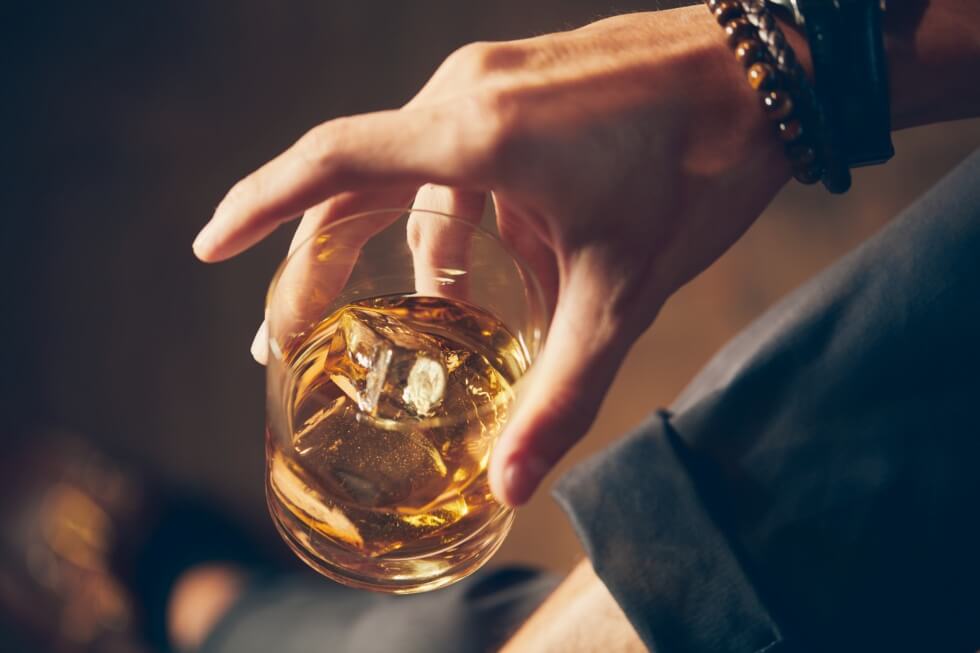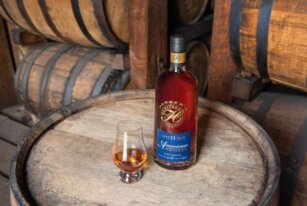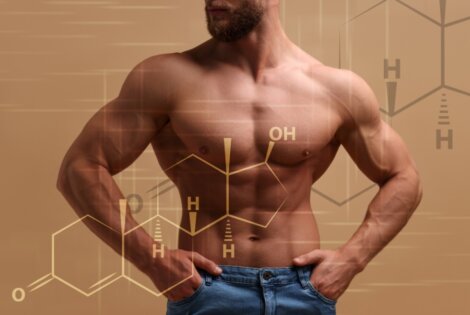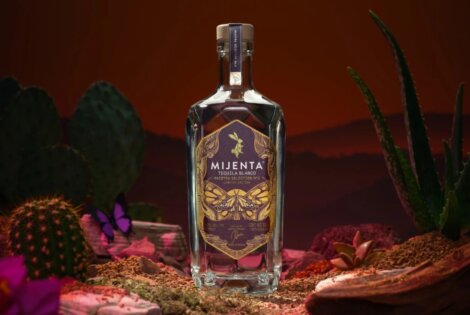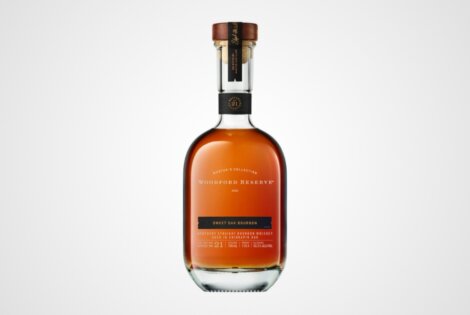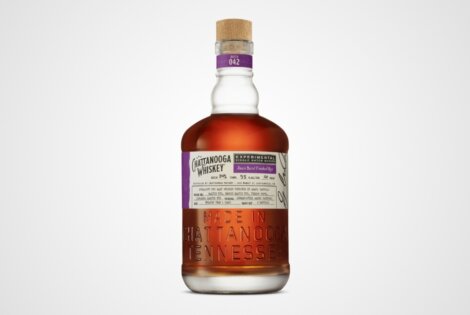Whiskey is one of the most popular alcohols in the world, yet the definition of whiskey is confusing because there are so many different types of whiskey. Scotch, bourbon, Irish whiskey and Tennessee whiskey, just to name a few.
Too much of anything is bad, but too much good whiskey is barely enough.
So what makes the whiskies different? We’ll answer this question, plus give you a big overview on what countries produce different types of whiskey and why.
But first, let’s start from the beginning.
Contents
What is whiskey?
The word “whiskey” comes from the Gaelic uisce beatha, which means “water of life”.
Whisky (commonly spelled “whiskey”) is a distilled alcoholic beverage made from a fermented grain mash. Whisky is often aged in wooden casks, and must be distilled to a minimum of 40% alcohol by volume (ABV).
The term “whiskey” is incredibly broad, and can mean many things to many different people. Nearly every country has their own variation of whiskey, and it has even been the cause of violent uprisings. During the American Revolution the alcohol was used as currency, and George Washington had a sizable distillery at his home.
Whiskey is incredibly important to most of the world, and its history dates back to 2,000 BC.

“Tell me what brand of whiskey that Grant drinks. I would like to send a barrel of it to my other generals.” ~ Abraham Lincoln
What’s in whiskey?
Whiskey can be made from a variation of these different grains:
- corn
- rye
- barley
- wheat
- sorghum
These grains are heated with water and fermented, creating what’s called “mash”. This process allows the starches in the grain to break down into sugars, which makes a dark liquid called “wort”.

What defines the taste of whiskey?
The variation in tastes and characteristics between different types of whiskies can be broken down into these variables:
- types and amounts of grains used
- distillation process
- aging duration
- type of barrel used
These different aspects of the creation of whiskey provide infinite possibilities for different types of whiskies that you can see stocked on the shelves of your local liquor store.
“Whiskey” or “Whisky”?
You’ll sometimes see two different spellings: “whiskey” and “whisky”. In the US and Ireland you’ll generally see “whiskey”, and “whisky” is generally used most everywhere else.
This wasn’t always the case in the US, when up until 1960 both terms were used interchangeably. Since 1960, though, Americans have generally used “whiskey” when talking about American whiskies, and “whisky” when referring to spirits made outside of the US.
There are a couple of exceptions to the rule when brands like Maker’s Mark use the old-style “whisky” to describe their alcohol.
It’s confusing, but then again, so is the English language.

Why Whiskies Taste Different
Whisky tastes vary wildly between types. Canadian whisky tastes completely different than bourbon whisky. That’s what makes the malted alcohol so interesting: no two whiskies taste the same.
This is largely in part because of the large number of variations in the whisky production process. Here are some of the variables that affect the taste of whisky:
- Whether the whisky is blend or from a single cask (or single pot)
- How long it matured in the cask
- What type of cask was used
- How long the whisky matured
- What grains were used in production
All of these factor in to how the particular whisky you’re drinking tastes the way it does. No two whiskies taste alike.
How Whiskey Is Made
In 2,000 BC the Babylonians were needing to make better perfumes, they figured out a rudimentary version of what we know as distillation. Distillation is essentially heating liquid to evaporation, then collecting the condensed, cooled liquid that’s left.
Once the Babylonians figured this out, the process hopped around Europe and Asia until the 13th century, when Italians finally figured out how to utilize this process for distilling wine.
It wasn’t until the 15th century in Scotland and Ireland that things started to get interesting, with the Europeans making a distilled alcohol for medicinal purposes.
But this was still nowhere near what we would call modern whiskey. It was incredibly potent and brutal, mainly because they hadn’t yet figured out the secret to whiskey.
Nowadays distilleries use modern equipment to eliminate bacteria and to help standardize the process. The stills are typically made from copper, since copper properties remove sulfur from the alcohol, making it taste less like rotten eggs. (Well, depending on the brand of whiskey you’re drinking.)

This is a variation of the column still (or “continuous still”) is used by most distillers in Europe and America. It features two columns that allow the mash to flow continuously through the columns.
When it comes to American grain whiskies like bourbon, the most popular type of still is the column still. The first column allows for the steam and wash descend, and the second column carries the alcohol from the wash. Here the alcohol can swirl and condense until it reaches the desired strength.
Here’s the process New York Distilling Company uses to make their rye whiskey.
The maturation process: What makes whiskey so smooth
The aging process is what makes whiskey drinkable. The general rule of thumb is this: the longer you age the alcohol, the smoother it tastes. Or, rather, if two whiskies have the same proof (or alcohol by volume), the smoother of the two will be the whiskey that has been aged longer.
In scientific terms, the aging process changes the chemical composition of the alcohol. The age of the whiskey is determined by how long the alcohol was sitting in maturing in the cask. (Contrary to popular belief, whiskey can’t mature in a bottle, so the aged time is only counted in years in the cask.)
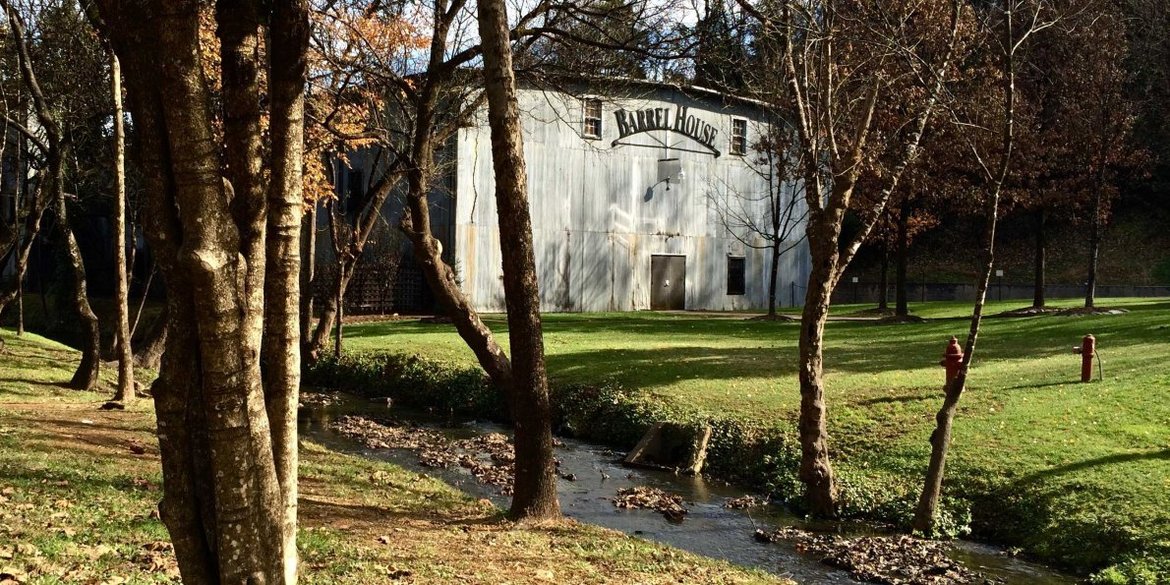
This is the Jack Daniels Barrel House in Lynchburg, Tennessee. Barrels of Tennessee whiskey will age for years until it is smooth and delicious.
The price is usually higher the longer the whiskey ages, for a couple of reasons:
- It’s more desirable. The whiskey is smoother, and more complex in flavor, so
- There’s less of it. As alcohol sits in barrels and ages, a portion of it evaporates. This is called the Angel’s Share, and the amount loss varies by year and other factors like temperature. This varies between 10% and 3% each year. For a barrel of 23-year Pappy Van Winkle, about 80% of the contents of the barrel will evaporate.
- It’s harder to store. The barrels have to physically sit somewhere and take up precious space for all of those years. So the longer the barrel sits, the more money the company loses. One barrel sitting for 21 years could have 3 barrels for 7 years in the same space.
Blends vs. single barrels
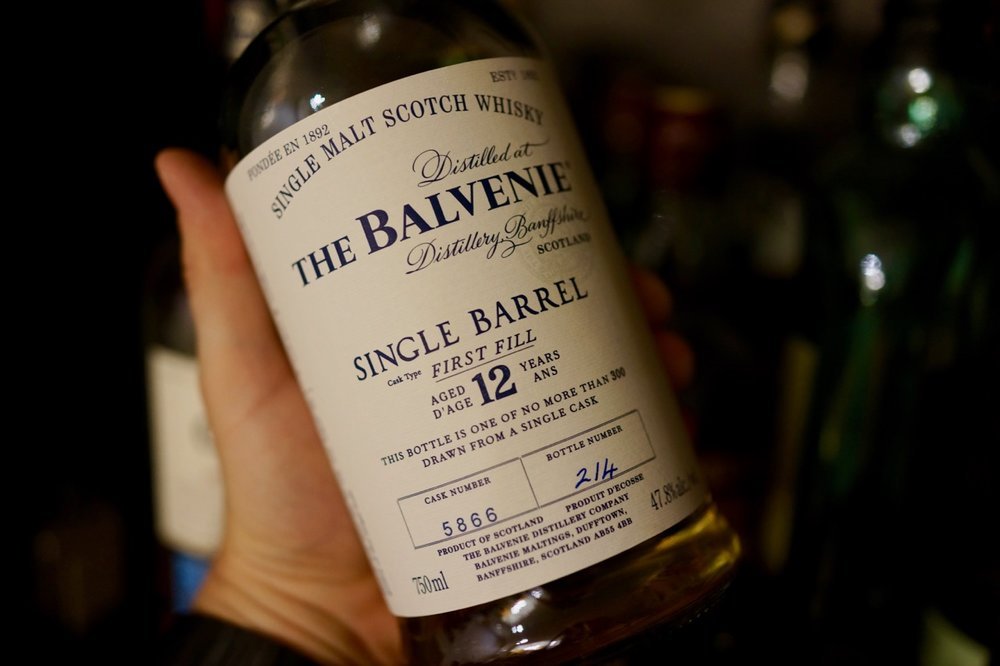
A couple of terms that you’ll see on whiskey labels are “single barrel” and “blend”.
A blend might be the same type of whiskey, or they might be a blend of different types of whiskey to introduce different colors and flavors. A typical blend is taking a higher-quality single barrel whiskey and mixing it with a less expensive spirit. This helps make cheaper alcohol.
A single barrel bottle of whisky, however, is what the name implies: whiskey bottled from a single aging barrel. Single barrel whiskey can have more nuances and have different characteristics than blended whiskey.
But it gets even more confusing: because there is no actual standardization or regulation on the precise definition of a “single barrel whiskey”, some companies pull from a blend of barrels, and age that in a single barrel in the final step of maturation.
Be that as it may, single barrel whiskies are still typically more expensive than a single barrel.
What’s the strength of whiskey?
“Love makes the world go round? Not at all. Whiskey makes it go round twice as fast.” ~ Compton MacKenzie
Whiskey strength is measured in ABV or Alcohol By Volume. If you’re curious about ABV, it’s the measure of how many millimeters of pure ethanol is present in 100 millilitres of solution at 20 °C.
The yard stick for selling whiskey is around 40% ABV , which is the minimum in most countries. (If you’re so inclined, you can leaf through the U.S. Government’s Standards of Identity for Distilled Spirits [PDF].)
The strength of whiskey can vary wildly, though. For example, my personal favorite Maker’s Mark bourbon sells at a cool 45% ABV. The popular Jim Beam is 60% ABV, and the blended Jameson Irish Whiskey is at 40% ABV.
Basically, it can be anything, but it’s usually at least 40% ABV. For reference, beer is usually in the ballpark of 4% – 9% ABV. Whiskey is around 5 to 10 times stronger than beer.
Whiskey proof
On a typical label of the good stuff you’ll see the ABV as well as something called “Proof”. Proof is another unit used to measure ethanol that was developed in the United Kingdom. Proof is equal to about 1.75 times the ABV.
“There is no bad whiskey. There are only some whiskeys that aren’t as good as others.” ~Raymond Chandler
Whiskey Types

Ok, we’ve got the basics of whiskey down, let’s talk about the different types of whiskies.
- Single malt whisky – Whisky made from one distillery that only uses a single type of grain.
- Blended malt whisky – A mixture of single malt whiskies made from different distilleries.
- Blended whisky – A mix of different types of whiskies that may or may not come from different distilleries as well. Anything is possible with a blend.
- Cask strength (or barrel proof)* – A whiskey bottled straight from the cask with little to no dilution.
- Single cask or single barrel – Whiskey bottled from an single cask, with the bottle labels noting the specific barrel. Taste can vary between different casks from the same distillery.
Whiskey Types by Country
Whiskies are so prevalent today that many countries have their own distillation, blend or type. Here are the main countries producing whiskies to date.
Scotch Whisky

To be considered a Scotch Whisky, it must adhere to the Scotch Whisky Regulations of 2009. Scotch has more stringent requirements compared to other whiskies on the list.
Scotch whisky is smoky and earthy, and has an unique quality due to the peat that is added to the malting process.
Scotch Requirements
- produced entirely in a single Scotland-based distillery
- must be at least 40% ABV (80 proof)
- less than 94.8% ABV (190 proof)
- the alcohol must be made from malted barley
- it must be aged for at least 3 years in a warehouse Scotland
- in an oak cask no bigger than 185 gallons (or 700 liters)
- have no added substances other than water and caramel coloring
Scotch can be broken down into these five different categories.
- Single malt – Scotch whisky that is made from only water and malted barley at a single distillery in pot stills.
- Single grain – Whisky made at a single distillery, but can have whole grain or other cereals. (The word “single” doesn’t refer to only one grain being used, but rather the single distillery used.)
- Blended malt (or “vatted malt” or “pure malt”) – A blend of at least two single malt whiskies from different distilleries.
- Blended grain – A blend of at least two single grain whiskies from different distileries.
- Blended – A blended whisky made from two or more single grain or single malt whiskies.
Notable Scotch Whisky brands: Laphroaig, Macallan, Johnnie Walker, Dewars, Balvenie.
Irish Whiskey

The Irish–like the Scottish–are well known for their whiskies. Ireland was one the first distilled drinks in Europe, dating back to 12th century.
Irish whiskey is different from Scotch whiskey due to triple distillation process (Scotch whisky is usually only distilled twice), which is said to make the whiskey smoother.
“Give an Irishman lager for a month, and he’s a dead man. An Irishman is lined with copper, and the beer corrodes it. But whiskey polishes the copper and is the saving of him.” ~ Mark Twain
Irish whiskey must be:
- distilled and aged in Ireland
- must be less than 94.8% ABV
- made from yeast-fermented cereal grains
- aged for at least 3 years
- in wooden casks no bigger than 700 liters (185 gallons)
Unlike Scotch whisky, Irish whiskey is relatively simple in terms of requirements to be called “Irish whiskey”. While they may use terms like “single grain”, “single malt”, and other categories of whiskies, they are not legally defined by Ireland.
Notable Irish whiskey brands: Jameson, Bushmills
American Whiskey
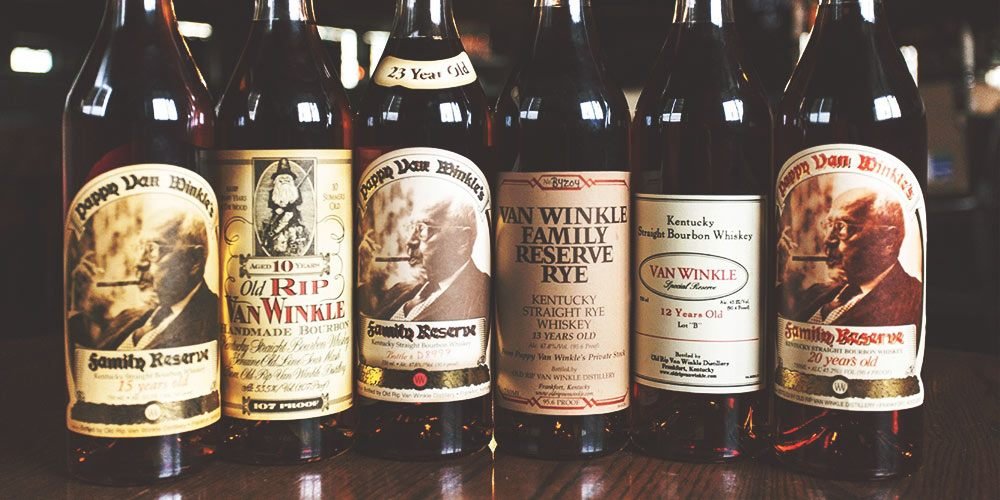
The Americans have taken making whiskey to new heights with the different variations of grain. We’re serious about our whiskies, as we’ve got quite a few different federally-recognized types.
U.S. Federal Whiskey Categories
The U.S. federal regulations recognize these generic whiskey categories:
- Blended whiskey – straight whiskeys and natural grain spirits (NGS), plus whatever flavorings and colorings. The NGS must be added to the label, and can be up to 80 proof.
- Light whiskey – More than 80% ABV and stored in used or uncahrred new oak containers.
- Spirit whiskey – A mix of neutral spirits and at least 5% of one of the stricter categories of whiskey.
Here are the different types or styles of whiskey found in the U.S.
Bourbon
Bourbon is made from a mash that consists of at least 51% corn and has aged in new, charred oak containers. The highest the proof can be is 160 proof (or 80% ABV), entered the barrel for aging at no more than 125 proof, and bottled at 80 proof or more.
Bourbon has no time requirements for aging, unless it’s straight bourbon, which has to be aged for at least 2 years. Also, if the bourbon has been aged for less than four years, it has to say so on the label.
Some believe that bourbon has to be made in Kentucky, but that’s not true. Although most bourbon is distilled in Kentucky, it can be made from anywhere in the U.S. as long as it consists of at least 51% corn.
Some notable brands of bourbon: Makers Mark, Evan Williams, Jim Beam, Bulleit, Four Roses, Pappy Van Winkle.
Corn whiskey (also White Lightning or Moonshine)
Corn whiskey is:
- made from at least 80% corn
- distilled to a maximum of 160 proof (80% ABV)
- barreled at lower than 125 proof (62.5% ABV)
Corn whiskey doesn’t have to be wood-aged (unlike bourbon), and if it’s aged it has to be in an uncharred oak barrel.
Corn whiskey is often referred to as moonshine.
Malt whiskey
Malt whiskey is
- made from at least 51% malted barley
- can’t be above 160 proof (80% ABV)
- has to be aged in charred new oak barrels at less than 125 proof (62.5% ABV).
IF the malt whiskey hasn’t been blended with spirits or whiskies, has no added color or flavoring, and as been aged for at least two years, the whiskey can be called “straight malt whisky.
Rye whiskey
American rye whiskey is just like malt whiskey except it’s made from at least 51% rye. (Canadian whisky is a bit different, see below.)
Notable rye whiskies: Old Overholt, Knob Creek Rye, Sazerac, Wild Turkey Rye, George Washington’s Rye Whiskey.
Wheat whiskey
Wheat whiskey sticks to the same U.S. regulations of rye and malt whiskies except that wheat whiskey is made from at least 51% wheat.
Wheat whiskies aren’t that common, but many bourbons are “wheated”, which means that they swap out wheat for the more common rye in their mash. Brands that do this include Maker’s Mark, Pappy Van Winkle and others.
Tennessee Whiskey
While not technically recognized as a category by the US Government, it should be noted that Tennessee whiskey is made up of one of the top-selling American whiskies worldwide: Jack Daniels. Jack Daniels is a straight bourbon, but the parent company prefers to label the alcohol as “Tennessee whiskey”.
Canadian Whisky

Canadian whisky as defined by the Parliament of Canada is:
- completely made in Canada (mashed, distilled, aged)
- must be aged at least 3 years in wooden barrels no bigger than 700 liters
- must be at least 40% ABV
The most popular Canadian whiskies are blends that contain a high ratio of corn, and are generally lighter and smoother than other whiskies (like Scotch). Canadian whisky also features rye in the mash, and “rye whisky” and “Canadian whisky” are used interchangeably. Most Canadian blends consist of high-proof grain and lower-proof rye whiskies.
Populars Canadian whiskies: Crown Royal, Seagrams, Rich & Rare, Canadian Club.
How Should You Drink Whisky?
“Whiskey, like a beautiful woman, demands appreciation. You gaze first, then it’s time to drink.” ~ Haruki Murakami
Let’s say you don’t already drink whiskey, but are wanting to get into it. Here’s a few ways you can enjoy the distilled goodness.
Master distiller Richard Patterson has a nice tutorial on how to drink whiskey.
While he is very particular about how people should drink whiskey in order to appreciate the flavors and nuances, it’s not for everyone. Here are a few other ways that people drink whiskey.
- On the rocks – This simply means with a couple of ice cubes.
- Neat – This is without any ice. Just a glass with straight bourbon.
- In a mixed drink – There are plenty of drinks that feature whiskies, and they’re quite tasty. They’re often mixed with ice and a simple syrup or something sweet to offset the bitterness.
If you’re just starting out, I’d recommend something with a lower proof, like 80 and below. These will typically be blended whiskies, and will allow your palate to get used to whisky. (Here’s a helpful primer on how to drink whiskey.)
Above all, just remember: There is no wrong way to drink whiskey.
We’ll leave you with this famous speech from 1953 by Mississippi legislator Noah “Soggy” Sweat, in which he extols the virtues of this beautiful drink (as read by novelist John Grisham). The speech starts at 4:51.

